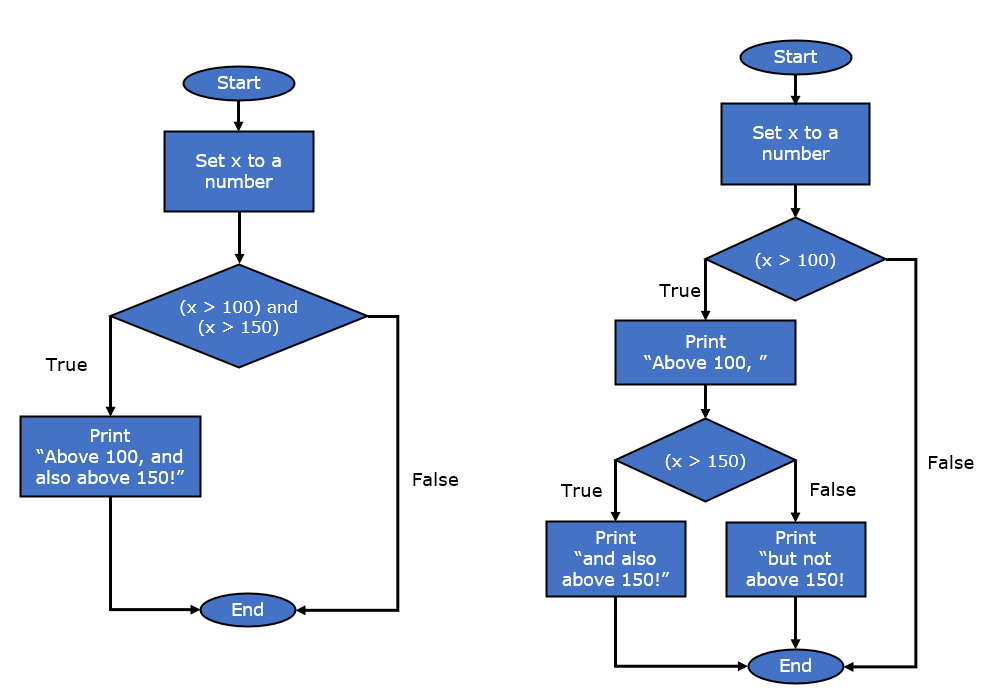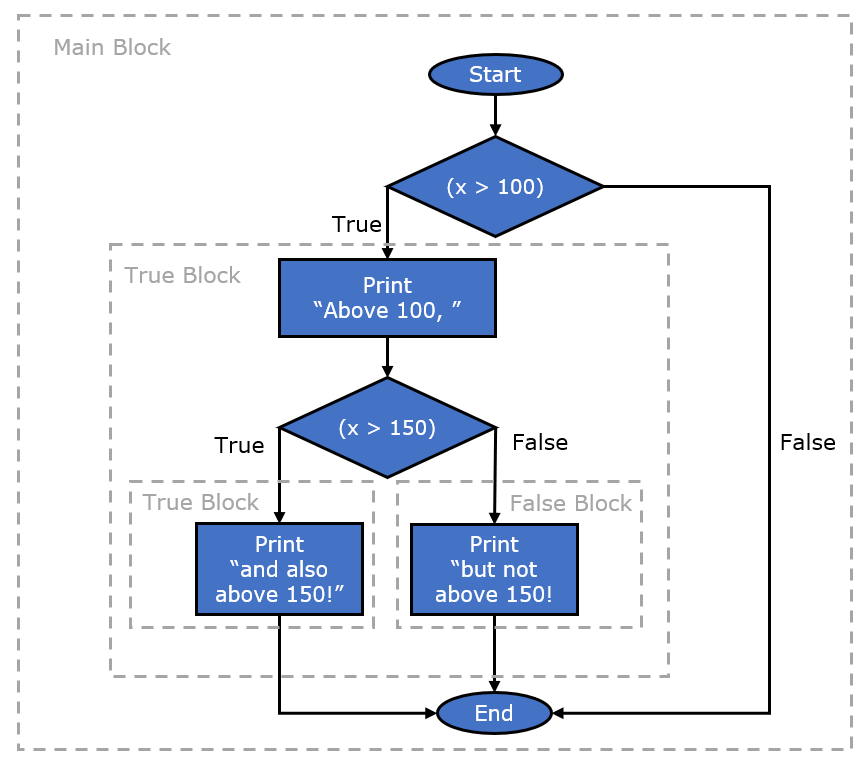Nested if Statements
It is possible to nest if statements within other if statements. This can be useful for testing multiple conditions but allowing us to run code for each conditional.
1. Nested if Statement
We can nest if statements as follows:
1.1 Example - Nested if Statement
x = 101
if x > 100:
print("Above 100, ", end="")
if x > 150:
print("and also above 150!")
else:
print("but not above 150!")
As x = 101 the first program will first execute the statement print("Above 100, ", end="") and then execute the statement print("but not above 150!"). Try different values of x by pasting the code above into a Python file.
If we compare this with:
x = 101
if (x > 100) and (x > 150):
print("Above 100, and also above 150!")
The second program cannot do this and only prints out "Above 100, and also above 150! if x is greater than 150.
If x = 99 or x = 130 the program will print nothing.
You should make sure you understand the program flow. The two program flows are depicted in the diagram below.

2. Indentation
You should note that in the example given in 1.1, the blocks of code are given by indentation. If we just examine the structure of the example it looks as follows:
# main block of code, anything aligned with this is in this block
if x > 100:
# True block of code
print("Above ten,")
if x > 150:
# True block of code
print("and also above 150!")
else:
# False block of code
print("but not above 150!")
This is also illustrated by the diagram below. You should note that the indentation defines each of the blocks of code.

=== TASK ===
Using nested if statements, write a program that asks the user for a whole number. Your program should do the following:
- If the number is divisible by 3 and 5 it should print out
Your number is divisible by 3 and 5.
- If the number is divisible by 3 and NOT 5 it should print out
Your number is divisible by 3 and NOT by 5.
- If the number is NOT divisible by and by 5 it should print out
Your number is NOT divisible by 3 and is divisible by 5.
- If the number is NOT divisible by and by NOT 5 it should print out
Your number is NOT divisible by 3 and 5.
Your program should match the examples below. I have given examples for each output.
Please enter a number:
15
Your number is divisible by 3 and 5.
Please enter a number:
12
Your number is divisible by 3 and NOT by 5.
Please enter a number:
20
Your number is NOT divisible by 3 and is divisible by 5.
Please enter a number:
22
Your number is NOT divisible by 3 and 5.
HINT: We learned how you can test if a number is divisible by 2 in the Lesson: If ... Else Statement earlier in this unit.